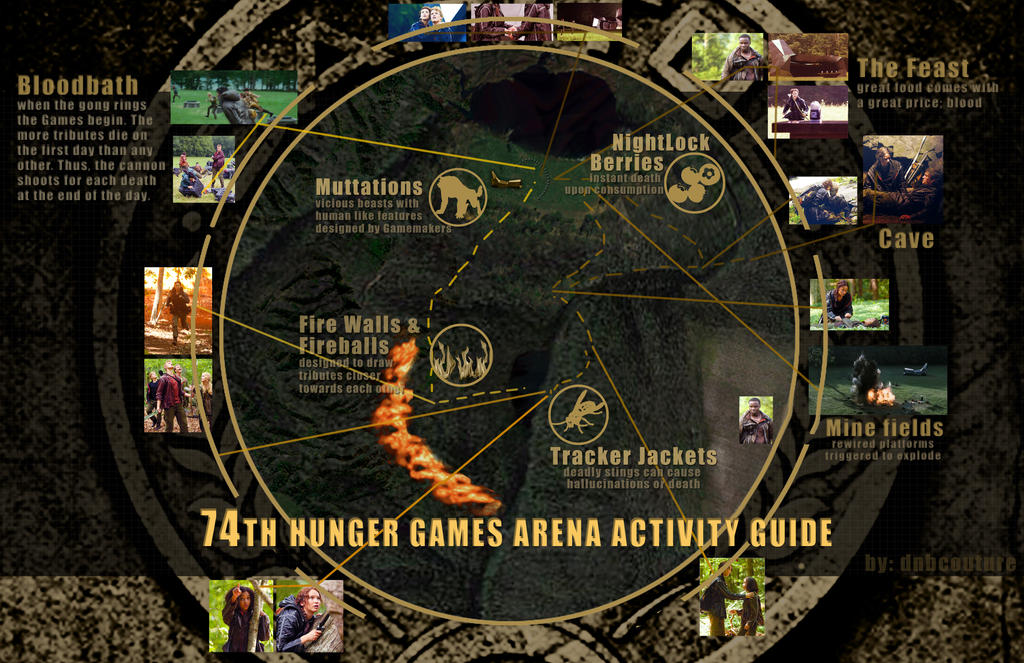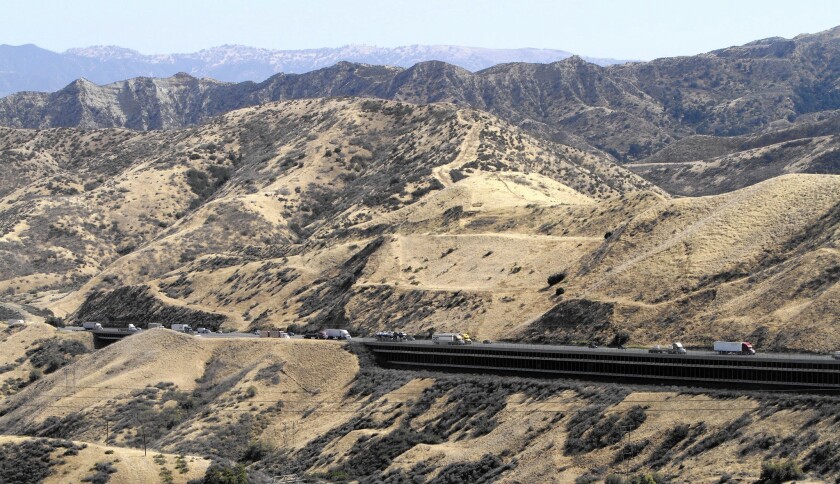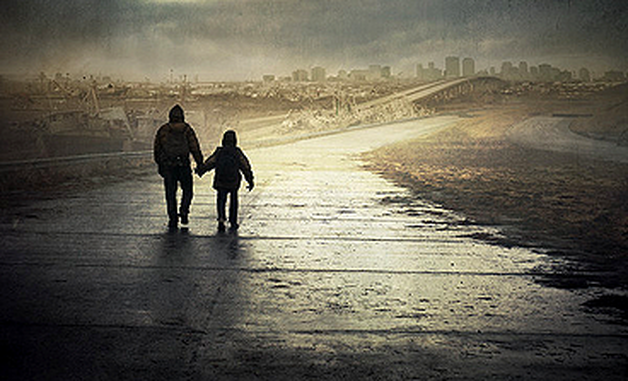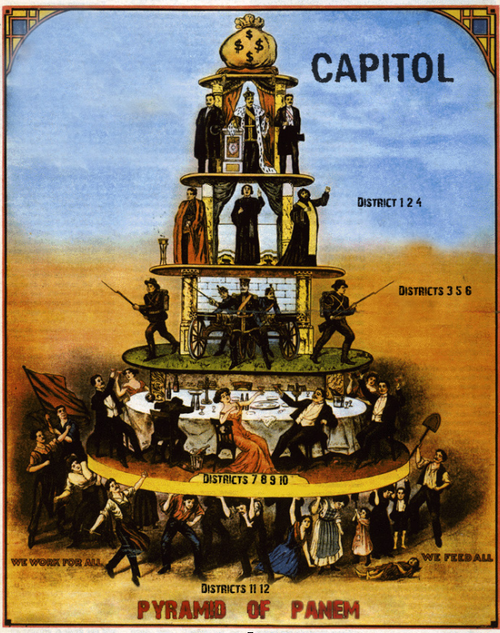Now that you remember what happens in The Hunger Games, Catching Fire, and Mockingjay, we can take a look at how some of my classmates have looked at Panem in regards to how those in power use popular culture, cultural hegemony, and the environment to manipulate the public.
In a majority of my classmates' blogs, they discussed the use of surveillance and a panoptic control over the citizens. Many commented that by using the things like the peacekeepers, the failed technology of the jabberjays, and even just cameras, the Capital has eyes everywhere. Kamryn's blog really placed these technological abilities of the Capital into the spotlight. With the knowledge that people in the Capital could always be watching, the districts are much more willing to follow the laws and strict guidelines. This willingness also comes from the constantly reminder of the carnage and destruction that is broadcasted regularly from the thought to be destroyed District 13.
 |
| A Panopticon Usually Includes Enclosed Spaces 0721-bks-SHONEcover-superJumbo.jpg |
Before I get into the rebellion and what my classmates thought about it, I want to discuss their thoughts about the uses of the Hunger Games themselves because a lot of them did mention the games themselves. In the clip below, you see the minute before Katniss and the other tributes begin the 74th Hunger Games. This time is filled with anxiety, adrenaline, and quick last minute decision.
In many of my classmates blogs, they looked at the games themselves as the closest example to Connors' panopticon experiment. They are being watched all the time, but don't know when their actions are being shown to the entire country. While many tributes have disadvantages as a result of the environment in the games arena, Katniss has an advantage in the forest. Laura's blog looks at this in how some of the philosophers we read described the wilderness as a safe haven, but also the unknown. Most people in District 12 fear the woods because of the predators as well as punishment they could receive from the Capital. Katniss does not share this fear. The forest IS her safe haven and source of survival, so she knows she can use the woods in the arena to her benefit.
In addition to the games themselves, the idea of the games were used to keep the people at bay. The games were punishment for the acts of rebellion committed that resulted in the destruction of District 13. The games become a part of the popular culture in Panem and the Capital places a grandeur around them. Not to mention, the games are every year AND streamed 24/7 in the districts, forcing all of the citizens of Panem to watch them. Teni points out that the children in the districts learn about the history and are taught to accept the games and that they are justified. However, in my opinion, if most of the children in District 12 and other severely oppressed districts are like Katniss, they will still have the belief that the games are disgusting and in no way justified, even if the Capital says they are.
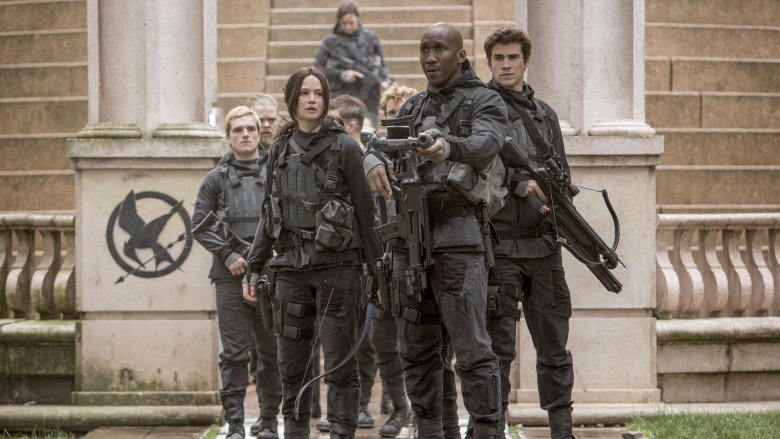 |
| Katniss and the others on her team in the Capital during the Fight the-spark-grew-into-a-rebellion-1500496351.jpg |
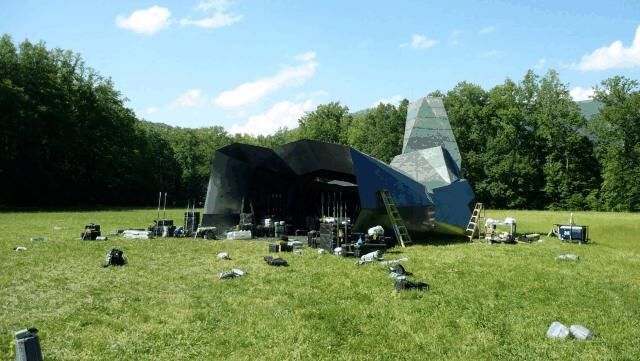 |
| Cornucopia in the 74th Hunger Games c9e43596be4f8ff9bba00acba730ee77b9b8667d_hq.jpg |
In my last blog, I really focused on the power structure and actions of the people in power. I focused on the fact the hierarchies really allowed for the Capital and even Coin to manipulate the public and people into doing what they want. One thing I did not account for though was the power of things in the manipulations of those in power.
The many people in the districts, especially those who were poorer, needed food for their large families. However, in order to get extra food, only the children could obtain tesserae in exchange for adding their names more to the reaping for the Hunger Games. The Capital gives the food thing power. These small additions of something necessary for a family's survival then has the power to make a child enter into games where they could be killed or forced to kill others. Jane Bennett (2010) looks at how people can give things agency and when the people in the districts rely on these things, the Capital gives them more agency for them to use the things to their benefit.
Every little thing in the games themselves has a lot of agency given to it by the capital and the tributes. Those are the weapons and supplies that the tributes need to fight and survive in the games. By limiting the amount of supplies, the game makers manipulate the tributes to fight for their survival. These items are doing nothing, but the things that they were made to do. However, the tributes place a heavy reliance on them, making them more powerful than they would be if there weren't any games to compete in.
Overall, President Snow and Coin use everything around them in their manipulation. In Panem, surveillance is key in the control over the people, but also holding control over things that are necessary to living gives the Capital even more power. I noticed that my classmates looked a lot at the environment that the Capital could manipulate. If you add the idea of thing power to that, then you can see that the Capital controlled every little aspect of the lives of its citizens. Whether it be through random surveillance or with holding the things needed to survive daily life.
*Author's Note -
If you want to read any of the blogs from my classmates, all you have to do it click on their names and it'll take you right to their blogs!
Work Cited
Bennett, Jane. 2010. Vibrant Matter: A Political Ecology of Things. Duke University Press.
Collins, Suzanne. 2009. The Hunger Games. Scholastic.
Foucault, Michel. 2008. "Panopticism." Discipline & Punishment. Indiana University Press.
Lawrence, Francis (Director). (2013). Catching Fire. USA: Lionsgate.
Lawrence, Francis (Director). (2014). Mockingjay – Part 1. USA: Lionsgate.
Lawrence, Francis (Director). (2014). Mockingjay – Part 2. USA: Lionsgate.
O’Brien, Susie & Imre Szeman. 2019. “History of Popular Culture.” Popular Culture: A User’sGuide. Langara College.




